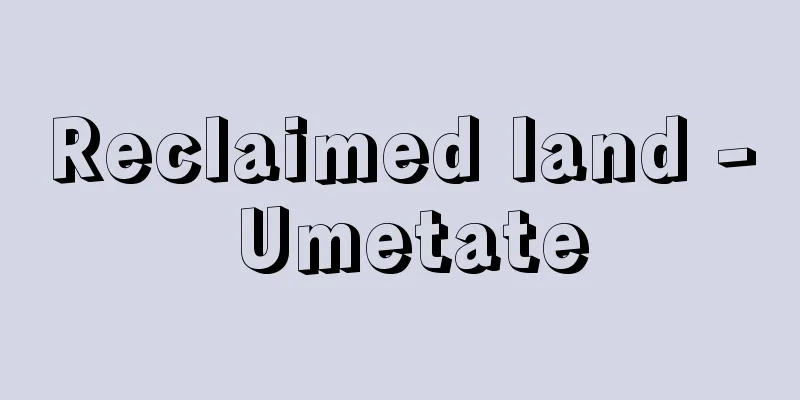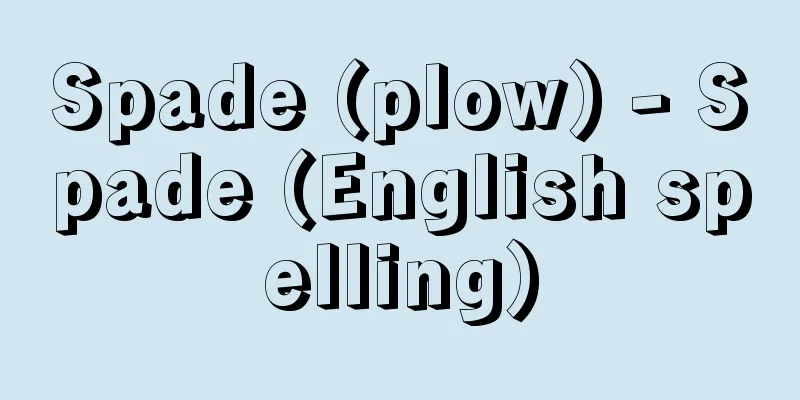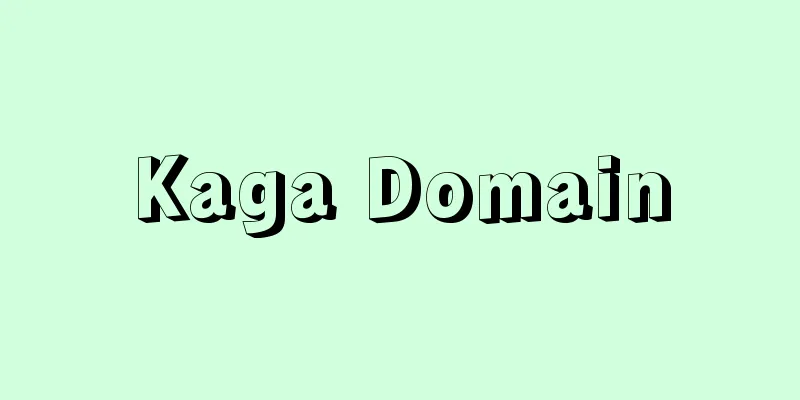Reclaimed land - Umetate

|
It refers to filling in sea areas, lakes, and lagoons with soil and sand to create port facilities, factories, housing, distribution complexes, sewage treatment facilities, or agricultural land, and in recent years has even led to the creation of offshore airports through reclamation. Japan's four major industrial zones, Tokyo/Yokohama, Nagoya, Osaka/Kobe, and Kitakyushu, are all located in waterfront areas, and most of them were created by developing industrial zones on reclaimed land. Full-scale land reclamation began after the enactment of the Public Water Surface Reclamation Law in 1921 (Taisho 10). This was because, as heavy chemical industrialization progressed, it became advantageous to rely on cheap sea transport for the mass transportation of raw materials and products. Even after World War II, the four major industrial zones, as well as about half of the new industrial cities and special industrial development areas established after 1962 (Showa 37), promoted industrialization by creating industrial land through reclamation, with the ports of their respective regions at their core. In recent years, as population concentration in cities intensifies, land reclamation has become carried out to provide land for urban redevelopment and housing. The area of land reclaimed in Japan has reached about 50,000 hectares since 1954. Well-known examples of land reclamation after World War II include industrial land in Tokyo, Chiba, Kawasaki, Yokohama, Sakai, Semboku, and Nagoya, and housing and redevelopment land in Port Town at Osaka Nanko and Port Island in Kobe. The technologies established through these efforts are being exported to South Korea, Taiwan and Southeast Asia. On the other hand, however, the concentration of heavy chemical industries in waterfront areas intensified environmental pollution in coastal areas, and the situation became serious around 1970. As a result, the Marine Pollution Prevention Law and the Water Pollution Prevention Law were enacted in the same year to strengthen regulatory measures, and in 1974 the Public Water Surface Reclamation Law was revised to impose strict conditions on the planning, construction and use of reclaimed land. Thanks to these measures, the coastal environment is gradually improving. [Takao Horiguchi] Source: Shogakukan Encyclopedia Nipponica About Encyclopedia Nipponica Information | Legend |
|
海域、湖沼、潟を土砂で埋め立て、港湾施設、工場、住宅、流通団地や下水処理施設、あるいは農耕用地などをつくることをいい、近年では埋立てによって海上空港をつくるまでになっている。日本の四大工業地帯である東京・横浜、名古屋、大阪・神戸、北九州はいずれも臨海部に立地し、大半は埋立地の上に工業地帯を造成してできたものである。 埋立てが本格的に行われ始めたのは1921年(大正10)に公有水面埋立法が制定されてからで、これは、重化学工業化が進められるにしたがい、原材料や製品の大量輸送を安価な海上輸送に依存することが有利となったからである。第二次世界大戦後においても四大工業地帯をはじめとして、1962年(昭和37)以降の新産業都市や工業整備特別地域の約半数も、それぞれの地域の港湾を中核として埋立てにより工業用地を造成し、工業化を促進してきている。近年の傾向としては、都市への人口集中の激化に伴い、都市の再開発用地、住宅用地を提供するため、埋立てが行われるようになってきている。日本の埋立てによる造成面積は1954年以降で約5万ヘクタールに達した。第二次世界大戦後の埋立てで著名なものは、工業用地では東京、千葉、川崎、横浜、堺(さかい)、泉北、名古屋など、住宅・再開発用地では大阪南港のポートタウン、神戸のポートアイランドなどである。これらによって確立された技術は、韓国、台湾、東南アジアに輸出されている。 しかし一方において、臨海部への重化学工業の集中は沿岸域の環境汚染を激化させ、1970年ころには深刻な状況となった。このため、同年には海洋汚染防止法、水質汚濁防止法などが制定されて規制措置が強化されるとともに、1974年には公有水面埋立法の改正が行われて、埋立地の計画、造成やその利用に関して、厳しい条件が課せられることになった。これらの措置によって沿岸域の環境は徐々に好転しつつある。 [堀口孝男] 出典 小学館 日本大百科全書(ニッポニカ)日本大百科全書(ニッポニカ)について 情報 | 凡例 |
<<: Umezu Masakage Diary - Umezu Masakage Diary
Recommend
Pomatochelidae
...General term for crustaceans belonging to the ...
Northern fur seal (English spelling) Callorhinus ursinus; northern fur seal
Carnivora, Pinnipedia, Otariidae, Genus Otariidae....
Assad
Syrian politician. Current president. Born in Dama...
Oyun Hawa - Oyun Hawa
...The former are songs with free rhythm, wide ra...
Function table
A table of functions that shows the relationship b...
select committee
...In addition, because party discipline is weak ...
Tutuila [island] - Tutuila
The main island of American Samoa in the South Pac...
Cognates
…Kinship ties are linked across generations throu...
Ichirakushi - Ichirakushi
...A complete catalogue of Joruri works. Compiled...
al-Khalifa (English spelling)
...The oldest surviving inhabitants are said to h...
Imeniny
… [Spring Nicola Day] During the imperial era, pe...
lira da braccio (English spelling) liradabraccio
…While the lubeck did not develop significantly a...
Recording room
〘Noun〙① A Chinese official title. From the Later H...
Tuul ghol (English spelling)
A river that flows through the northern part of th...
grains du paradis (English spelling) grains du paradis
…As with other areas along the Gulf of Guinea, it...









